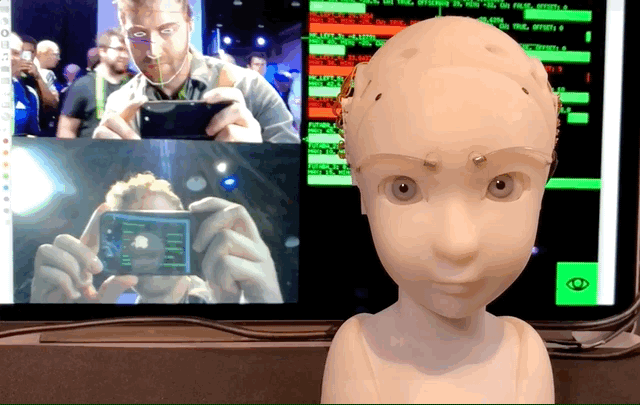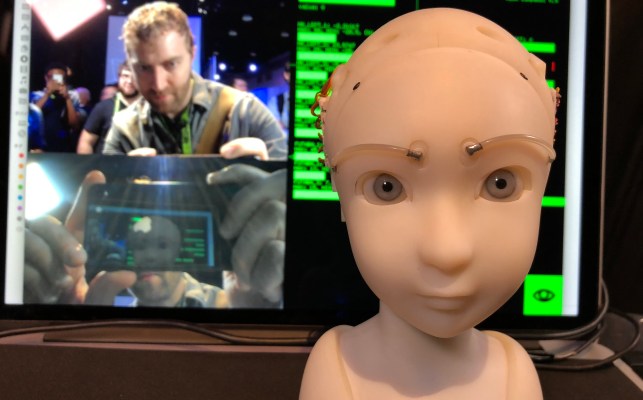Humans already find it unnerving enough when extremely alien-looking robots are kicked and interfered with, so one can only imagine how much worse it will be when they make unbroken eye contact and mirror your expressions while you heap abuse on them. This is the future we have selected.
The Simulative Emotional Expression Robot, or SEER, was on display at SIGGRAPH here in Vancouver, and it’s definitely an experience. The robot, a creation of Takayuki Todo, is a small humanoid head and neck that responds to the nearest person by making eye contact and imitating their expression.
It doesn’t sound like much, but it’s pretty complex to execute well, which, despite a few glitches, SEER managed to do.
 At present it alternates between two modes: imitative and eye contact. Both, of course, rely on a nearby (or, one can imagine, built-in) camera that recognizes and tracks the features of your face in real time.
At present it alternates between two modes: imitative and eye contact. Both, of course, rely on a nearby (or, one can imagine, built-in) camera that recognizes and tracks the features of your face in real time.
In imitative mode the positions of the viewer’s eyebrows and eyelids, and the position of their head, are mirrored by SEER. It’s not perfect — it occasionally freaks out or vibrates because of noisy face data — but when it worked it managed rather a good version of what I was giving it. Real humans are more expressive, naturally, but this little face with its creepily realistic eyes plunged deeply into the uncanny valley and nearly climbed the far side.
Eye contact mode has the robot moving on its own while, as you might guess, making uninterrupted eye contact with whoever is nearest. It’s a bit creepy, but not in the way that some robots are — when you’re looked at by inadequately modeled faces, it just feels like bad VFX. In this case it was more the surprising amount of empathy you suddenly feel for this little machine.
That’s largely due to the delicate, childlike, neutral sculpting of the face and highly realistic eyes. If an Amazon Echo had those eyes, you’d never forget it was listening to everything you say. You might even tell it your problems.
This is just an art project for now, but the tech behind it is definitely the kind of thing you can expect to be integrated with virtual assistants and the like in the near future. Whether that’s a good thing or a bad one I guess we’ll find out together.
